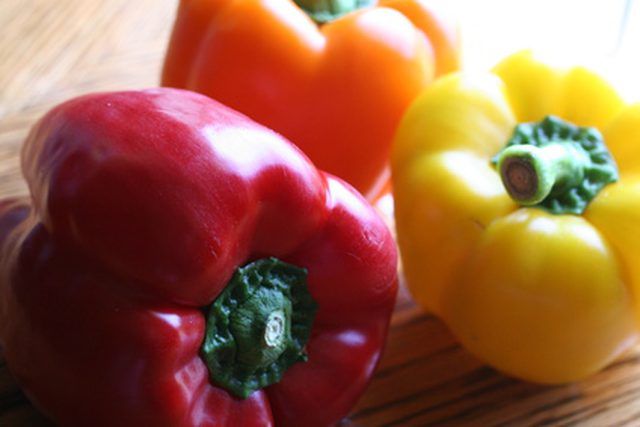Bulbs
Flower Basics
Flower Beds & Specialty Gardens
Flower Garden
Garden Furniture
Garden Gnomes
Garden Seeds
Garden Sheds
Garden Statues
Garden Tools & Supplies
Gardening Basics
Green & Organic
Groundcovers & Vines
Growing Annuals
Growing Basil
Growing Beans
Growing Berries
Growing Blueberries
Growing Cactus
Growing Corn
Growing Cotton
Growing Edibles
Growing Flowers
Growing Garlic
Growing Grapes
Growing Grass
Growing Herbs
Growing Jasmine
Growing Mint
Growing Mushrooms
Orchids
Growing Peanuts
Growing Perennials
Growing Plants
Growing Rosemary
Growing Roses
Growing Strawberries
Growing Sunflowers
Growing Thyme
Growing Tomatoes
Growing Tulips
Growing Vegetables
Herb Basics
Herb Garden
Indoor Growing
Landscaping Basics
Landscaping Patios
Landscaping Plants
Landscaping Shrubs
Landscaping Trees
Landscaping Walks & Pathways
Lawn Basics
Lawn Maintenance
Lawn Mowers
Lawn Ornaments
Lawn Planting
Lawn Tools
Outdoor Growing
Overall Landscape Planning
Pests, Weeds & Problems
Plant Basics
Rock Garden
Rose Garden
Shrubs
Soil
Specialty Gardens
Trees
Vegetable Garden
Yard Maintenance
How to Grow Greenhouse Peppers
How to Grow Greenhouse Peppers. Purchasing peppers from a grocery store can be expensive, especially if those peppers had to be brought in from a warmer climate. While the rising price of store-bought fresh peppers can be discouraging, greenhouse gardening can make the dream of delicious, homegrown peppers a reality for gardeners in otherwise...

Purchasing peppers from a grocery store can be expensive, especially if those peppers had to be brought in from a warmer climate. While the rising price of store-bought fresh peppers can be discouraging, greenhouse gardening can make the dream of delicious, homegrown peppers a reality for gardeners in otherwise unsuitable climates. Pepper seeds can be germinated indoors in a temperature-controlled environment and moved to your greenhouse when the temperature is suitable. Growing peppers in a greenhouse is a simple, enjoyable gardening project that can provide you and your family with the delicious peppers you've been craving.
Things You'll Need
Pepper seeds
Potting compost
Peat moss
Perlite
3-inch planting containers
8-inch planting containers
Garden hose or watering can
10-10-10 fertilizer
Specially-formulated tomato fertilizer
Gardening stakes
Strips of nylon pantyhose
Pruning knife
Indoor Germination
Sow your pepper seeds indoors between March and April. Fill several 3-inch planting containers with a growing medium made up of equal parts potting compost, peat moss and perlite. Place two seeds on the surface of the growing medium in each planting container; cover the seeds with no more than 1/2 inch of the growing medium. Water your seeds until the growing medium is moist to the touch. Make sure that any excess water has the ability to drain free.
Place the planting containers in a temperature-controlled area of your home that is kept between 65 and 70 degrees F. Keep the room dark, or cover the planting containers, while the pepper seeds are germinating.
Wait up to 20 days for your pepper seedlings to sprout. Check the progress of your pepper seeds every three to four days; lightly water the seeds, as needed, to keep the growing medium moist.
Transplant your pepper seedlings to individual 8-inch planting containers filled with the growing medium mixture when they reach approximately 3 inches tall. Make sure to plant the seedlings at the same level they were planted in their original planting containers. Water in your pepper seedlings with a quarter-strength solution of a balanced 10-10-10 fertilizer.
Greenhouse Growing
Move the pepper seedlings from your home to your greenhouse as soon as you are able to maintain a greenhouse temperature of at least 55 degrees F. If your greenhouse is too cold, keep your pepper seedlings near a sunny windowsill where they can receive plenty of indirect sunlight until the temperature in your greenhouse is suitable.
Keep the growing medium for your greenhouse peppers moist at all times, watering as often as is necessary. Check the moisture of your growing medium about an hour after your peppers have been watered. Pick up some of the growing medium in your hand and squeeze gently; if you are able to wring out excess water, you may be over-hydrating your pepper plants.
Provide supports for pepper plants that are over 1 foot tall. Insert gardening stakes into your planting containers on either side of your pepper plants. Secure the pepper plants to the supports with strips of nylon pantyhose.
Fertilize your greenhouse pepper plants once a week during their growing season. For best results, wait until fruit forms on your pepper plants to begin your weekly fertilization schedule. Apply a half-strength solution of a specially formulated liquid tomato fertilizer according to package directions.
Harvest your greenhouse peppers when they reach the desired stage of ripeness. Unripe, green peppers can be harvested as soon as they are fully grown; let the peppers ripen a bit if you want to harvest yellow, orange or red peppers. To harvest your peppers, use a sharpened, sterilized pruning knife to cut the peppers from the plants.